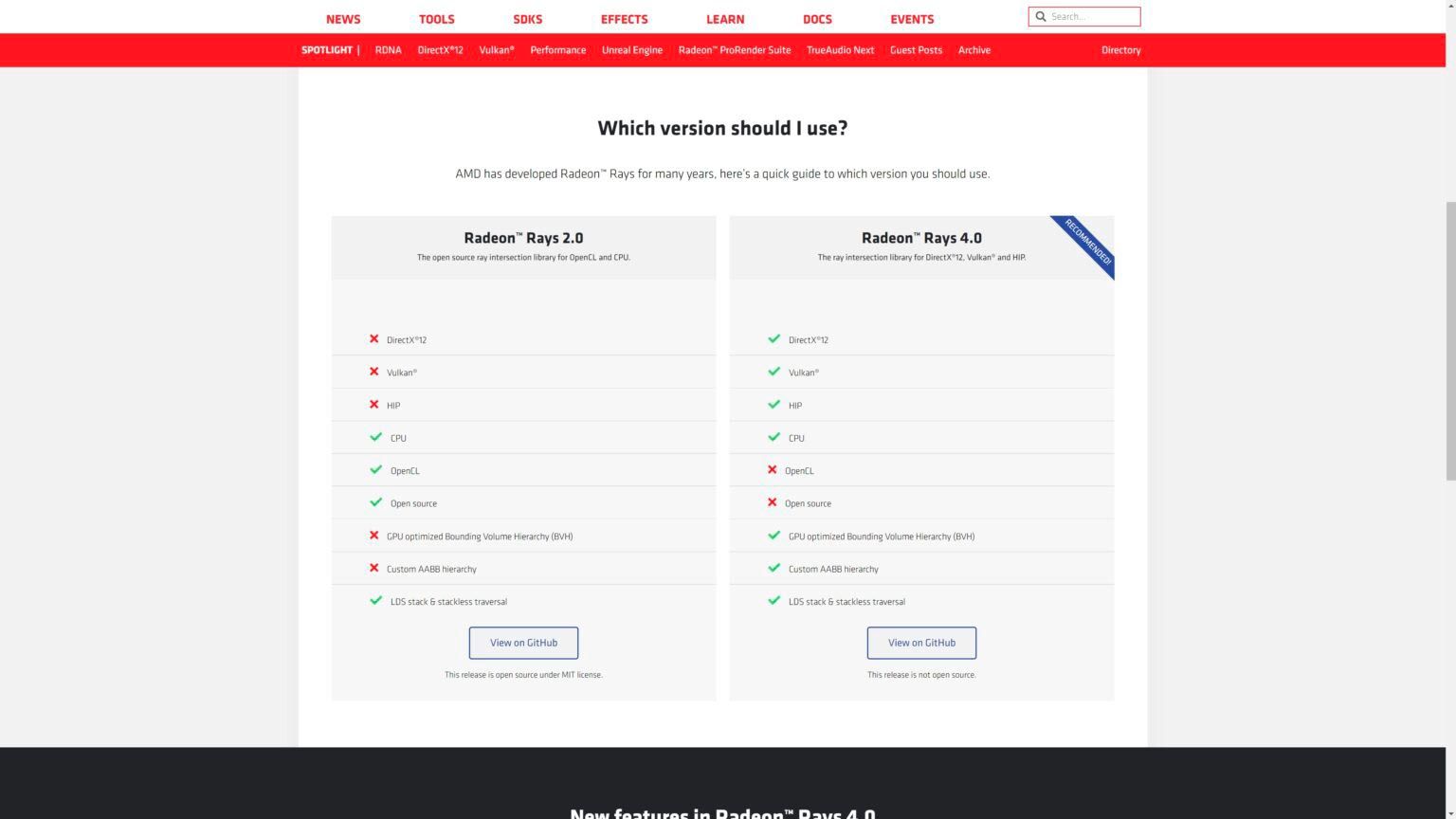AMD released Radeon Rays 4.0 in a closed code, which the public did not like very much. After all, it will be open source. We will give you the details inside.
It has been a busy month for the graphics software division at AMD as GPUOpen was launched along with new tools and the FidelityFX suite. It looks like AMD is completing all the steps to prepare for raytracing in preparation for the release of the next GPUs. Let’s take a look at the new features of Radeon Rays 4.0.
AMD Radeon Rays 4.0, open-source bounce
In the beginning, AMD released this software in a locked code, which was very unpleasant for the community. So the brand had no choice but to re-launch Radeon Ray’s 4.0 as open source. This ray-tracing acceleration library was called FireRays and is part of AMD ProRender.
AMD soon received complaints from users about the decision to withdraw this software. ProRender Product Manager Brian Savery wrote the following in AMD subreddit:
We have reviewed this internally and will make the following changes: AMD will offer Radeon Ray’s 4.0 as an open source. However, AMD-specific IP will be placed in libraries and the source code will be made available to the community via SLA.
As user scottherkleman mentioned in the Unreal 5 demo thread (looks fantastic), we have committed to providing shared, non-blocking ray tracing libraries for a single vendor. This is the goal of Radeon Rays, and while it’s good to offer shared libraries with a permissive license, we can improve this offer based on your feedback with the source code.
So please continue to build amazing things with Radeon Rays, and if you’re the kind of developer who needs to work on the source code right away, please contact the GitHub or GPUOpen site. The source for 2.0 is also available here.
Previously it could only run on the CPU, which was a clear limitation. With the new AMD Radeon RDNA2 GPUs around the corner, Radeon Rays 4.0 introduces BVH optimization for graphics cards that require one of the APIs such as DirectX12, Vulkan, or Apple’s Metal.
They will also support the equivalent of CUDA from Nvidia, the AMD C++ parallel computing platform. This means that they will support HIP (Heterogeneous-Compute Interface for Portability). The new features of AMD Radeon Rays 4.0 are as follows:
- Custom AABB.
- BVH optimization.
- New APIs.
AMD ProRender is now available with a free add-on for the Unreal Engine.
